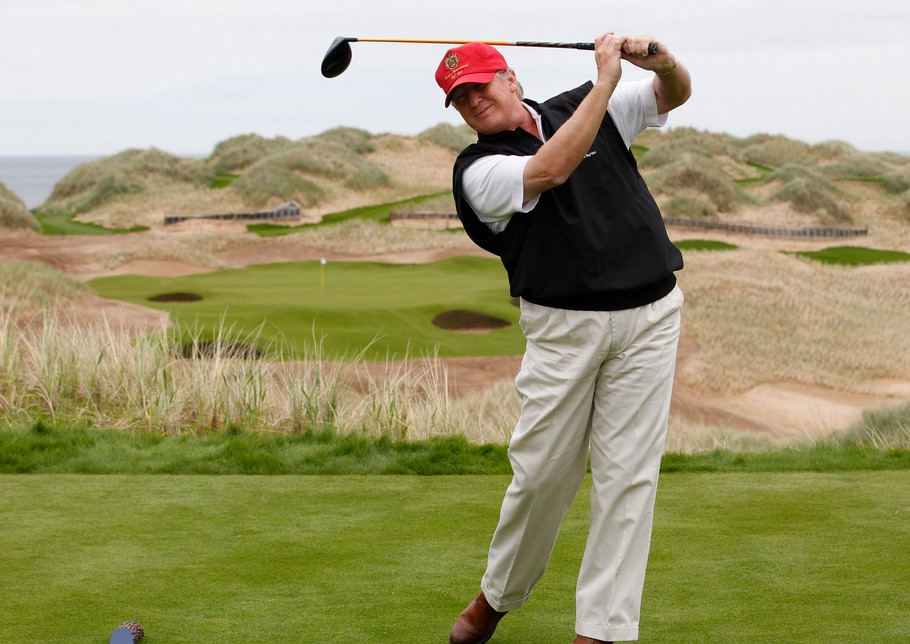A fairway shot is a crucial element in the game of golf, executed from the fairway area as a continuation of the tee shot. The goal of this shot is to move the ball closer to the green with high accuracy and control. To succeed with a fairway shot, players need to understand the characteristics of the fairway, choose the right club, and develop a strategy based on course conditions and wind direction.
With consistent practice and a solid understanding of tactics, the fairway shot can become a key weapon for improving overall scores in every round of golf. Both beginners and professional players stand to gain significantly from mastering effective fairway shot techniques and strategies. Here’s an in-depth explanation from GoGolf.
What is a Fairway Shot in Golf?

A fairway shot is a term used in golf to describe a shot taken from the fairway area, which is the short-grass strip stretching from the tee box to the green. The fairway is the ideal landing zone for the ball after the first shot (tee shot), especially on par 4 or par 5 holes. A shot from the fairway is typically the second shot, though on longer holes it might be the third. In the context of play, the fairway shot is highly important because it serves as the strategic bridge to get the ball closer to the green where the hole is located.
The fairway features closely mown grass and is meticulously maintained to ensure a smooth, stable surface. This makes it easier for players to strike the ball cleanly. As a result, the fairway shot is a golden opportunity to direct the ball accurately toward the green. Accuracy, distance control, and proper club selection are the key components of a successful fairway shot.
Characteristics of a Fairway Shot
A fairway shot has several distinctive characteristics that set it apart from other types of golf shots. Important aspects include:
- Shot Location: Fairway shots are taken from the fairway, the primary area between the tee box and the green. The fairway differs from the rough, bunkers, or tee box due to its shorter, even grass.
- Shot Order: Usually the second shot on a par 4 hole and possibly the third on a par 5. On short holes (par 3), fairway shots rarely occur because the first shot is aimed directly at the green.
- Shot Purpose: Fairway shots aim to direct the ball to or near the green with precise, measured distance. Ideally, the result places the ball in a position that makes the next approach shot or putting easier.
- Surface Condition: The fairway’s surface is highly conducive to clean shots because its grass is designed to minimize interference with the club’s movement through impact. This enables crisper, stronger, and more directed strikes.
Understanding these characteristics helps golfers maximize their playing strategy and minimize the risk of landing in hazards such as bunkers or rough.
Common Clubs Used for Fairway Shots
Choosing the right golf club for a fairway shot depends on various factors, such as the distance to the green, wind direction, course contours, and the player’s comfort with certain clubs. Here are some types of clubs commonly used for fairway shots:
1. Irons (Numbers 4 through 9)
Irons are the primary choice for fairway shots because they offer excellent control and accuracy. The iron number determines the shot distance:
- Irons 4-5: For long distances (about 160–200 yards).
- Irons 6-7: For medium distances (about 130–160 yards).
- Irons 8-9: For shorter distances (under 130 yards).
2. Hybrid
Hybrids are a combination of iron and wood, designed to help players achieve long distances with better control compared to long irons. They are suitable for both amateur and professional players seeking an alternative to long irons.
3. Fairway Woods (3-wood, 5-wood)
If the green is still quite far, fairway woods are an excellent choice. Fairway woods have lower lofts than irons, allowing the ball to travel farther. They’re ideal for par 5 or long par 4 holes where the shot to the green exceeds 180 yards.
4. Wedges
Wedges are used when the ball is very close to the green. Pitching wedges, sand wedges, or lob wedges can be selected depending on the desired height and style of approach.
Choosing the right club is crucial for fairway shot success since each club has different loft and distance characteristics.
From search to swing in seconds—get the GoGolf app, Download Now!
The Objectives of a Fairway Shot
Fairway shots have several primary objectives that significantly influence the strategy and outcome of a round. These objectives include:
1. Getting the Ball on the Green
The main goal of a fairway shot is to place the ball as close to the green as possible, or even directly onto the green if the distance allows. This provides an easier putting opportunity, increasing the chance for a birdie or par.
2. Improving Accuracy
Compared to shots from the rough or bunkers, shots from the fairway are much more accurate because the fairway surface is smoother. This helps players produce straight shots that stay on target.
3. Setting Up the Next Shot
In golf, it’s important to think strategically about the next shot. A good fairway shot will place the ball in an ideal position for an approach to the green or even putting if it reaches the green.
4. Avoiding Hazards
Fairway shots also aim to avoid various hazards like bunkers, water, or rough areas around the green. With proper planning, players can position the ball in a safe zone, making it easier to finish the hole.
Example Strategies for Fairway Shots
In practice, fairway shots require strategic consideration based on course conditions and player ability. Some common fairway shot strategies used by golfers include:
- Using a fairway wood if the green is still more than 180 yards away, especially on par 5 holes. This shot brings the ball closer to the approach area.
- Using a mid iron (iron 6 or 7) for medium distances around 140–160 yards, prioritizing accuracy so the ball doesn’t drift into hazards.
- Using a wedge if the ball is under 100 yards from the green, aiming to place it in a comfortable putting position.
- Considering wind direction and surface conditions, for example, using a lower-loft club if facing strong headwinds to keep the ball on target without being carried off course.
- Determining the landing spot—visualizing where the ball will land and how much it will roll after hitting the ground. This is critical for deciding the aim point.
A well-thought-out fairway shot strategy tailored to the course conditions can deliver optimal results and boost the chances of achieving the best possible score.
By mastering fairway shots with careful club selection, precise execution, and strategic foresight, players can navigate the course more efficiently and gain a crucial advantage over their competition.
[ Follow our social media Account: GoGolf Instagram | GoGolf Facebook | GoGolf X ]











